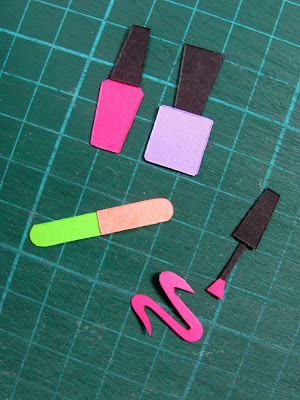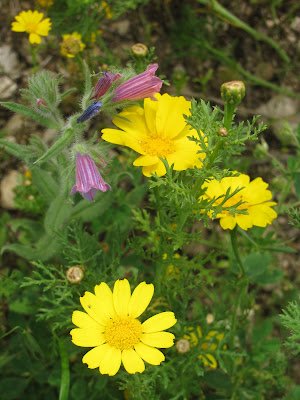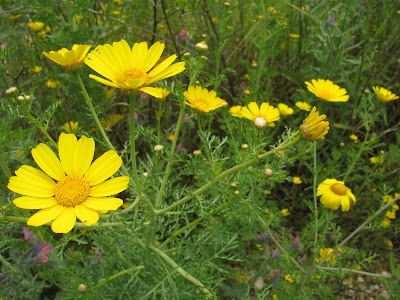Sovev Zichron, or Zichron Ya'akov circular route, is a hiking path that starts inside Zichron Ya'akov, a town located on
Mount Carmel with magnificent views across the coastal plain to the Mediterranean Sea. Zichron Ya'akov, which means "Jacob's Memorial", was founded in 1882 through the generosity of
Baron Edmund de Rothschild. Named for his father, Ya'akov, or Jacob, it is among the earliest established towns in Israel.
Sovev Zichron was apparently broken out of a 21km long bicycle path paved by the local cycling community. The roughly 3km route is a short hike, with gorgeous views of the sea, seasonal blossoms and even a small cave. It starts with a brief walk in the woods, which then opens to a wide dirt road overlooking the Kabbara Stream, a beautiful wadi (valley) full of vegetation. The path is wide and mostly flat and easy to walk.
The weather was beautiful the day we hiked and it was to easy to forget for a moment that there is a war going on. However, not far into our route we had a reminder. Maj. Ro'i Chapel, 25, was a
Nahal Brigade commander from Zichron Ya'akov, who was killed battling terrorists on 7th October 2023. This beautiful stone, above, marks the "Ro'i Lookout Point" along the route and is a wonderful way to remember a courageous young man.
We continued on the path, with beautiful views of the Kabbara Stream and the cliffs along it. We could see the
Ramat Hanadiv Vulture Cage and
Bustan Carmel, apparently an amazing and magical orchard for the cultivation of tropical trees. I should visit one day!
The spring blossoms were abundant, especially the gorgeous yellow
Crown Daisy, a native to the Mediterranean region, and the dark blue
Syrian Cornflower-Thistle. Apparently the Cornflower's deep blue colour symbolizes healthy eyes - hence it became a treatment for eye ailments. In France, the plant is called
casse-lunette, or "break glasses", and is still used in French herbal medicine as a remedy for the eyes.


High above the Kabbara Stream we watched a couple of vultures from the breeding cage soar above us. The cage is part of a project to increase the vulture population in Israel which began in the Carmel in 1992. The project nurtures baby vultures in captivity under carefully monitored conditions and then releases them to the wild. The adult vultures, raised in captivity owing to injuries or other reasons, are unable to survive in the wild like their offspring. The newly laid eggs are removed and artificially hatched. Removal of an egg encourages the vultures to lay a 'reserve egg' to compensate for the one that is lost. In this way, the number of eggs laid is doubled. When the second egg is removed, a plaster model is put in its place so that the vulture can continue to nest. When the eggs finally hatch, they are returned to the parents' nest or the nest of another bird willing to accept the chick. There the babies grow untainted by human touch. And it seems that all the effort is worth it - more than a quarter of the vultures in the wild in Israel are the product of Ramat Hanadiv's breeding programme.



To the west we could see the Mediterranean Sea and the agricultural areas of kibbutz Ma'agan Michael and Ma'ayan Zvi. We took a short break at some benches, seemingly used regularly by Instagrammers! There was a clear view of the Hadera power station on the skyline. Then, several bends later, we saw the cave entrance and an iron ladder that climbs to it. The view from the "Cave of the Wild Boar", or Ma'arat Hahazirim, is apparently breathtakingly spectacular. I will confess that I didn't try to find out!
Mount Carmel and the city of Haifa are full of wild boars and the cave is named after them.
Ma'arat Hahazirim
After the cave, we continued along the path until the dirt road ends - the end point of the route. We turned around and traced our steps back to the car, once again enjoying the beautiful displays of spring blossoms. Our next stop was Ramat Hanadiv, a memorial garden commemorating Baron Edmond de Rothschild and his wife, located at the southern end of Mount Carmel.








































.png)









































